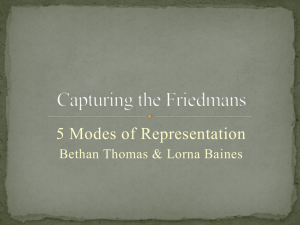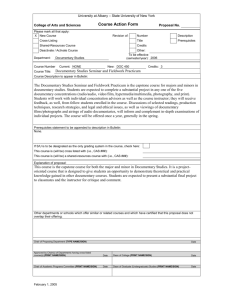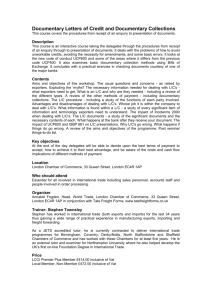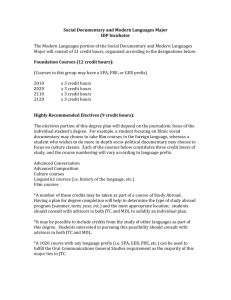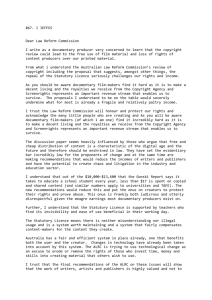How Does a Documentary Get Defined - kapiticollege
advertisement
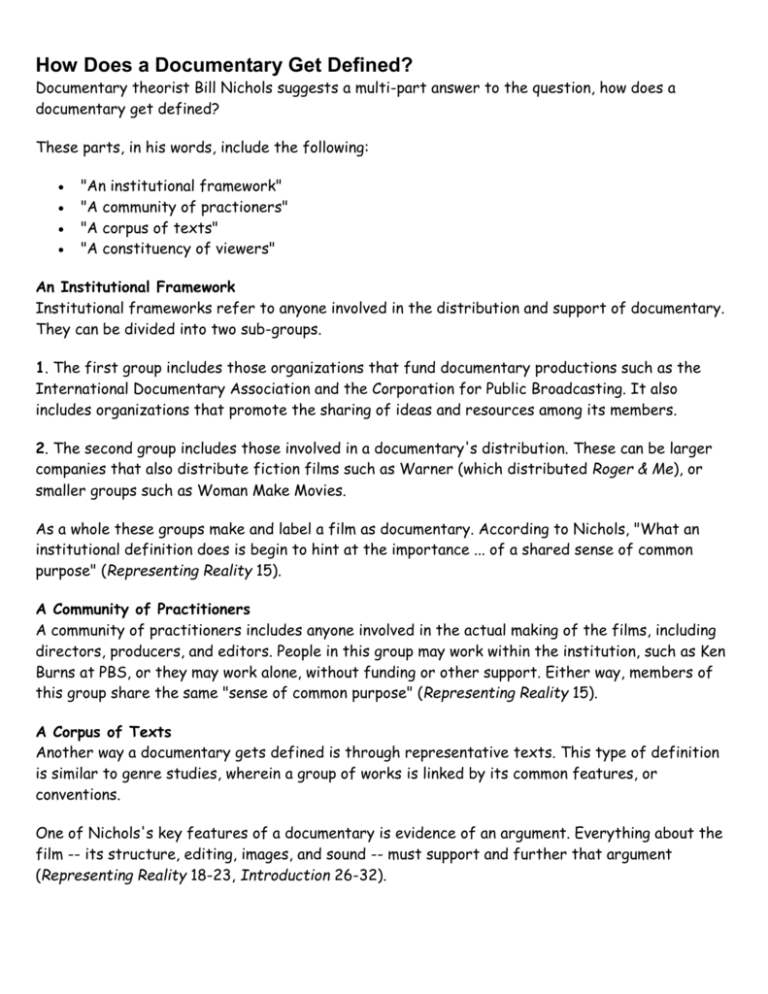
How Does a Documentary Get Defined? Documentary theorist Bill Nichols suggests a multi-part answer to the question, how does a documentary get defined? These parts, in his words, include the following: "An institutional framework" "A community of practioners" "A corpus of texts" "A constituency of viewers" An Institutional Framework Institutional frameworks refer to anyone involved in the distribution and support of documentary. They can be divided into two sub-groups. 1. The first group includes those organizations that fund documentary productions such as the International Documentary Association and the Corporation for Public Broadcasting. It also includes organizations that promote the sharing of ideas and resources among its members. 2. The second group includes those involved in a documentary's distribution. These can be larger companies that also distribute fiction films such as Warner (which distributed Roger & Me), or smaller groups such as Woman Make Movies. As a whole these groups make and label a film as documentary. According to Nichols, "What an institutional definition does is begin to hint at the importance ... of a shared sense of common purpose" (Representing Reality 15). A Community of Practitioners A community of practitioners includes anyone involved in the actual making of the films, including directors, producers, and editors. People in this group may work within the institution, such as Ken Burns at PBS, or they may work alone, without funding or other support. Either way, members of this group share the same "sense of common purpose" (Representing Reality 15). A Corpus of Texts Another way a documentary gets defined is through representative texts. This type of definition is similar to genre studies, wherein a group of works is linked by its common features, or conventions. One of Nichols's key features of a documentary is evidence of an argument. Everything about the film -- its structure, editing, images, and sound -- must support and further that argument (Representing Reality 18-23, Introduction 26-32). Some other of these conventions might include the following: Voiceover narration Interviews (talking heads) Social actors (real people) On-location sound recording (Introduction 26). Not all documentaries exhibit these characteristics, however. When one uses a technique or avoids a typical feature altogether, the work becomes a site in which to explore, test, and maybe expand the documentary definition. A Constituency of Viewers Audiences have certain expectations when they watch a documentary, and these help determine a documentary's definition as such. These expectations are based on previous experience, both with life and with other films (Representing Reality 24). The primary assumption is that what we see and hear is grounded, in some way, in the real world. The events represented possess a historical basis, something we can point to as actually happening or having had happened down the street, in Ohio, or around the world (Representing Reality 25, Introduction 35). A second assumption centers on the notion of objectivity. Similar to reporters' goals for being impartial, this notion of fairness in representation also colors an audience's judgment of a documentary (Representing Reality 30). The more fidelity of the image to the perceived sense of reality, the more value it retains (Introduction 35). A third assumption is more general -- that the audience wants to learn something (Representing Reality 30). Enough truth in this statement exists for it to be mocked: just think of Ben Stein as the science teacher in The Wonder Years. Of course, all of this is up for debate. Anywhere a tension occurs -- in institutions, in texts, and in audiences -- is a site of inquiry into documentary and its definition. Bibliography Nichols, Bill. Introduction to Documentary. Bloomington and Indianapolis: Indiana UP, 2001. Nichols, Bill. Representing Reality: Issues and Concepts in Documentary. Bloomington and Indianapolis: Indiana UP, 1991.
